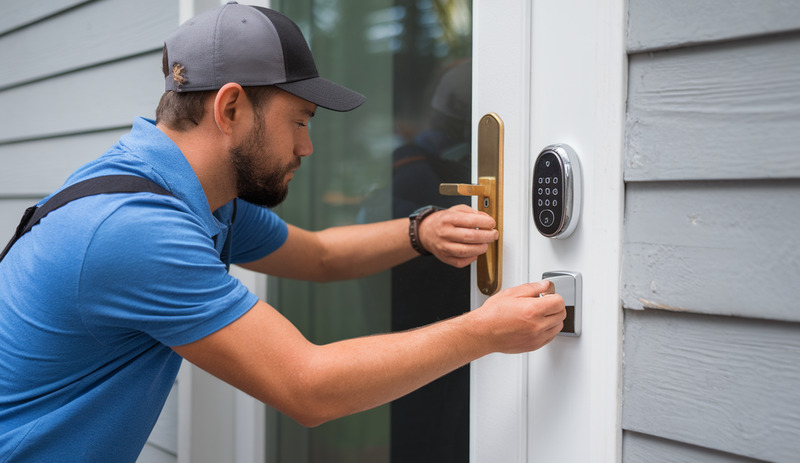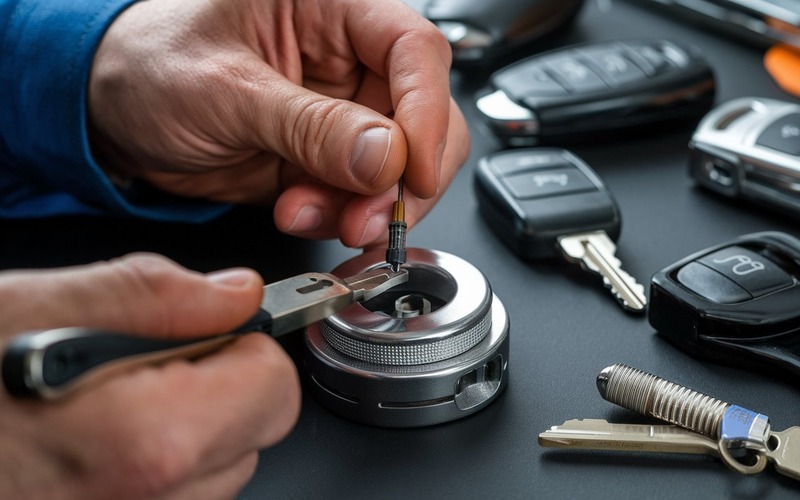
Picture this: You’ve just inherited your grandmother’s beautiful antique hope chest. It’s been in the family for generations, with intricate brass hardware and a lock that looks like it came straight out of a historical movie. But there’s one problem – you don’t have the key.
Most people would think this treasure is now just decorative, but what if I told you there’s hope? Locksmiths aren’t just for modern security systems.
These key wizards can actually unlock (pun totally intended) the secrets of vintage locks that seem impossible to open. Whether it’s a family heirloom, a vintage cabinet, or a historical piece you’re desperate to restore, professional locksmiths have some pretty impressive tricks up their sleeves.
What Makes Vintage Locks Different from Modern Locks?
Let’s talk about something captivating: antique locks aren’t merely outdated metal-they’re intricate historical artifacts with rich personalities. Unlike modern mass-produced locks, those beauties of yesteryear had unique mechanisms and told a story.
Pretty much every lock you could find from before, say, WWII had a moment during which it was carefully crafted, and almost all of them (exceptions exist) had complex internal structures that required a key-cutter with a different sort of mindset to approach cutting the blank, not to mention a different set of tools with which to maintain the locks once they were in use.
Consider old-fashioned locks like old-fashioned cars. They’re not just useful-they’re beautiful objects that require unique know-how and a certain deference to master. The reasons why the mechanisms of early locks are no longer imitated today might not be readily apparent, so let me list a few key distinctions.
Can Any Locksmith Handle Vintage Locks?
Here’s something not everyone understands: not every locksmith can handle antique hardware. You wouldn’t take a classic Ferrari to just any mechanic, and you shouldn’t trust your historical lock to just any locksmith. Working with those kinds of ancient mechanisms requires a particular kind of training and a good deal of experience.
The ideal locksmith possesses more than just technical know-how; they are also steeped in the historical significance of the lock. They do what any good surgeon would do: approach the mechanism with the precision necessary to keep it, and the design it was built upon, intact while resolving key-related issues. It is part technical ability, part historical preservation. If you’re looking for expert vintage lock restoration, we’ve got you covered.
You May Like: Are Key-Cutting Machines Really Accurate? [2025]
The Key Cutting Process for Antique Locks
When it comes to making keys for old locks, nothing but the most specialized techniques will do. Professionals use them. They have to. And they don’t all use the same techniques.
They don’t all use the same tools. For the most part, the art of key duplication for antique locks is not in the public domain. It’s on a private domain pathway. In part, that’s because if you really need to use an impressioning technique on a lock, you probably aren’t going to want to go blabbing about it after you finish.
This is not a swift process. Crafting a key for a vintage lock can consume multiple hours spent in the delicate balance of measuring, tracing, and metal work with an eye toward precision. It’s a task that demands a comprehensive understanding of the lock’s singular “fingerprint” and the ability to almost perfectly replicate it.
Potential Risks and How Professionals Prevent Damage
Incredibly fragile, vintage locks may be destroyed forever with one wrong move. Memorial locksmiths tend to favor the same approach as museum conservators. Both use specialized techniques and tools that are guaranteed to minimize potential damage. Both praise the art of making something look as good as new while respecting the history of an object.
Custom-designed probes might be used, and extensive measurements taken, to ensure that every interaction with the lock is gentle and precise. The goal is not just to create a functional key but also to preserve the integrity and historical value of the lock. Visit our Google Maps location to see our expert restoration work.
When to Restore vs. When to Replace
Old locks can’t all be saved, and they shouldn’t be. Sometimes, a new lock makes the most sense-especially because we’re dealing with some historical-value locks that have exceptional craftsmanship. Other times, a selected replacement is what we need if we’re going to keep the piano-lock aesthetic.
Experts judge many aspects: the lock’s state, its historical importance, the probable costs of making it functional again, and the likelihood that modern security can be added without marring its original appearance. They work very carefully to find a balance between keeping things as they were and making them practical and accessible.
When you come across an antique lock, think of it as more than just an old way to secure a door. You are looking at a mechanical marvel that was made when those that created it had far fewer tools and far less information to work with. And look, too, at how well it has survived-that’s a testament not just to the quality of the lock itself but also to the quality of the craftsmanship that went into making it.
Final Words
Vintage locks aren’t just obstacles – they’re little pieces of history waiting to be unlocked. With the right locksmith, you can breathe new life into those cherished family pieces without compromising their original character.
Do your homework. Not all locksmiths are created equal. Look for professionals who specialize in historical hardware, check their reviews, and don’t be afraid to ask specific questions about their experience with vintage locks. Always get a consultation first. A good locksmith will be honest about whether your specific lock can be successfully keyed without damage.



